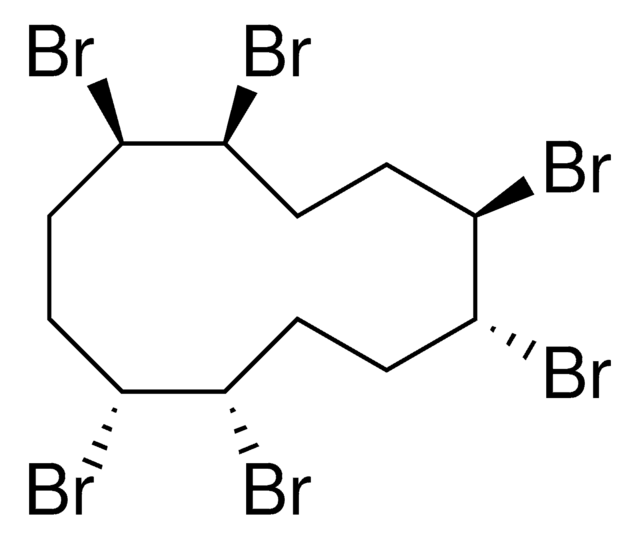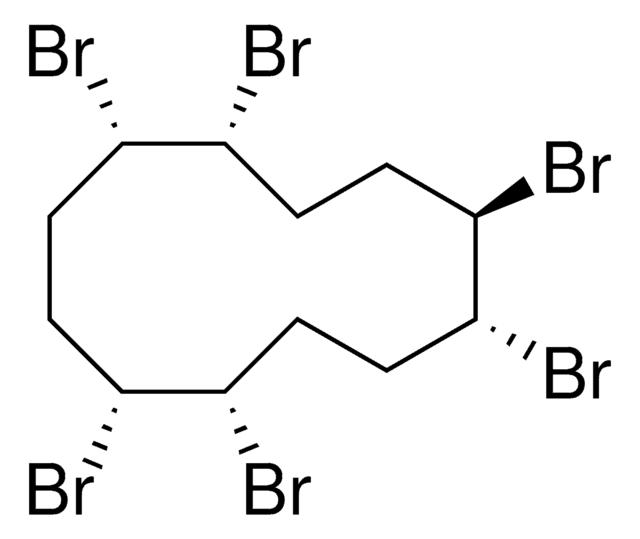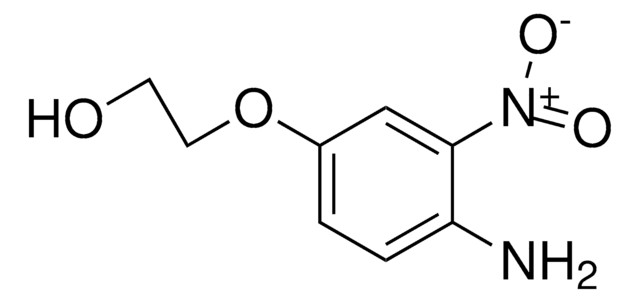144762
1,2,5,6,9,10-Hexabromocyclododecane
95%
Synonyme(s) :
HBCD, HBCDD
About This Item
Produits recommandés
Essai
95%
Solubilité
acetone: soluble 25 mg/mL, clear, colorless to light yellow
water: slightly soluble
Chaîne SMILES
BrC1CCC(Br)C(Br)CCC(Br)C(Br)CCC1Br
InChI
1S/C12H18Br6/c13-7-1-2-8(14)10(16)5-6-12(18)11(17)4-3-9(7)15/h7-12H,1-6H2
Clé InChI
DEIGXXQKDWULML-UHFFFAOYSA-N
Vous recherchez des produits similaires ? Visite Guide de comparaison des produits
Description générale
Application
Actions biochimiques/physiologiques
Mention d'avertissement
Warning
Mentions de danger
Conseils de prudence
Classification des risques
Aquatic Acute 1 - Aquatic Chronic 1 - Lact. - Repr. 2
Code de la classe de stockage
11 - Combustible Solids
Classe de danger pour l'eau (WGK)
WGK 3
Point d'éclair (°F)
Not applicable
Point d'éclair (°C)
Not applicable
Équipement de protection individuelle
Eyeshields, Gloves, type N95 (US)
Faites votre choix parmi les versions les plus récentes :
Déjà en possession de ce produit ?
Retrouvez la documentation relative aux produits que vous avez récemment achetés dans la Bibliothèque de documents.
Les clients ont également consulté
Active Filters
Notre équipe de scientifiques dispose d'une expérience dans tous les secteurs de la recherche, notamment en sciences de la vie, science des matériaux, synthèse chimique, chromatographie, analyse et dans de nombreux autres domaines..
Contacter notre Service technique













